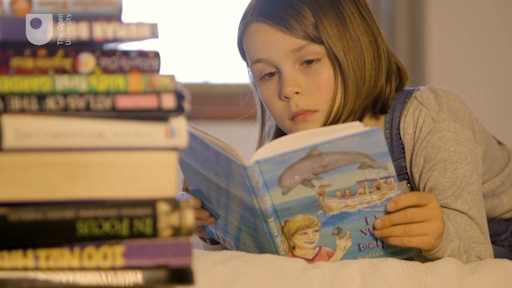1 Words and pictures in children’s fiction through the ages
There is evidence that children were reading books in English with pictures from as early as the sixteenth century: for example, an illustrated 1503 edition of a crusader adventure story, Bevis of Hampton, by Richard Pynson, shows pencil doodlings in the margins that suggest a child’s hand. The earliest known illustrated book specifically produced for children was a Latin text book, dating from the seventeenth century and translated into English in 1659. In the first activity for this course you will watch a video which explores the history of children’s book illustrations.
Activity 1
Iona and Peter Opie’s famous collection of children’s books was acquired by the Bodleian Library in 1988 and contains approximately 20 000 books printed for children between the sixteenth and twentieth centuries. Watch the following video that features a visit to this collection at the Bodleian’s Weston Library in Oxford and think about how have pictures in books for children changed over the years, and why?

Transcript: The history of picture books for children
Discussion
The video gives a brief glimpse of the history of pictures in children’s books, and how they changed over the centuries as a result of changing techniques, attitudes and markets. Illustrations in early books designed for children were often crude, cheaply produced wood cuts, since it was not considered necessary to invest effort or money in more sophisticated illustrations for children. The frontispieces were sometimes more expensively produced as these were on display in shop windows. As attitudes towards childhood and child readers changed, pictures in children’s books reflected a gradual decline in moral instruction and a growing emphasis on fun and entertainment. New technologies such as engraving and then lithography emerged and became cheaper, and the quality of illustrations in books for children gradually improved. Colour became affordable: some of the cruder examples of colouring shown would have been carried out by young children in cottage industry settings. Intensely coloured editions, such as the 1863 edition of Red Riding Hood shown in the video, became increasingly common and affordable for the middle classes.
By the late nineteenth and early twentieth century, much work of high quality was in circulation: this period has been called a golden age for children’s literature. The rise of mass education in Britain – specifically as a result of the 1870 Education Act – also created a growing new market of young readers at that time. Later in the course you will learn more about some of the famous golden age illustrators such as Walter Crane, Randolph Caldecott, John Tenniel, Arthur Rackham and Kate Greenaway. However, in the next section we focus on the way in which words and pictures work together to create engaging children’s stories, both classic and contemporary.
